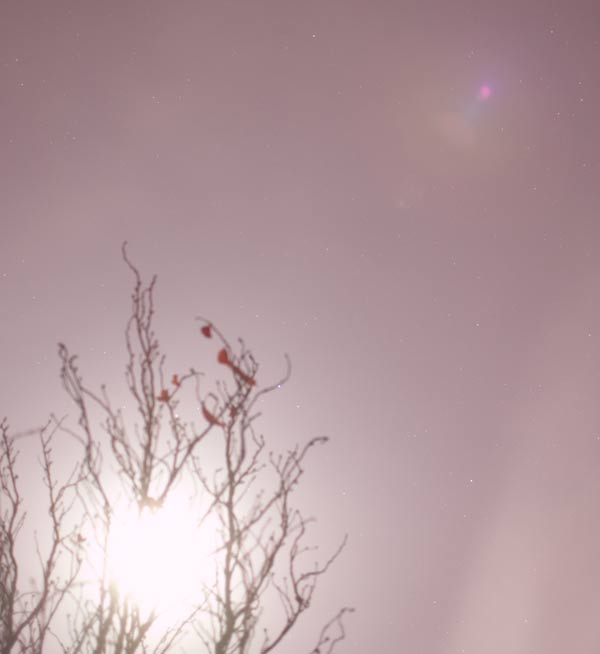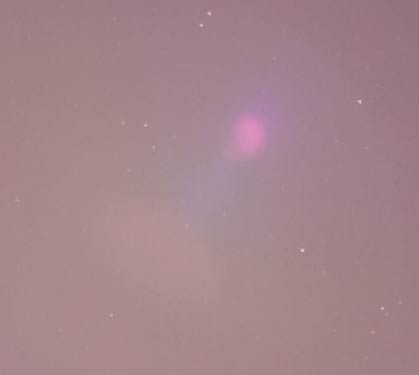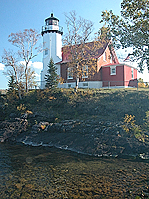It looks like you're using an Ad Blocker.
Please white-list or disable AboveTopSecret.com in your ad-blocking tool.
Thank you.
Some features of ATS will be disabled while you continue to use an ad-blocker.
share:
Iv mentioned this on another thread, Nikola Tesla a scientist in the late 1800s, early 1900s patented lots of his theories, some beyond our
comprehension at the time and some that didnt work.
But what is interesting is one of his theories based on flight, was using electro magnetic propelled craft, ie flying discs or cigar shaped crafts with sub stations on the ground, as the source of its power.
He died in 1943 and the american government took all his works, theories and patents and some have remained classified, some 4 years later there was the roswell incident, coincidence? Im not sure, but it does make you think.
www.abovetopsecret.com...
[edit on 13-10-2008 by Horus12]
But what is interesting is one of his theories based on flight, was using electro magnetic propelled craft, ie flying discs or cigar shaped crafts with sub stations on the ground, as the source of its power.
He died in 1943 and the american government took all his works, theories and patents and some have remained classified, some 4 years later there was the roswell incident, coincidence? Im not sure, but it does make you think.
www.abovetopsecret.com...
[edit on 13-10-2008 by Horus12]
well i think that this is just lens flare from the camera, that bright light at the bottom of the photo probably caused it. it does look a little like
a ufo, but you can tell by looking at a larger image that is not a solid object.
Hi,
Being a professional photographer for coming on 18 years now and having many different degree's and distinctions in various fields, including the teachings of the Digital Darkroom [ Photoshop ] i say this, without a shadow of doubt, this is NOT lense flare. Let me repeat that, this image shows NO signs of Lense Flare..............OK? Thanks
A few questions ->
[1] In the article from Shanghai Daily it says " He spotted the UFO in four photos later that night when he went home. He showed Xinhuanet all 84 photos he took on Saturday ". FOUR photo's? Were are the other 3 gone?
[2] If this lazer show was on for the 20 minutes then there must have been a good few thousand spectators watching it. Has any other witness's come forward claiming the same thing?
[3] Ghost hunters and what not have been in rooms for example and felt the presence of something but unable to see it, though they usually find there pictures have a figure of a ghost in the image. Could this be the same thing happening here. I mean, could it be possable the UFO is hidden [ cloaked ] from the naked eye but can show up on an image or video?
[3] For the illusion to work, there would need to be a lazer pointing skywards to create the illusion. As we can see from the image, there seems to be one [1] lazer underneath and to the left of the UFO. Could this lazer be creating the illusion?
[4] The UFO is not sitting dead centre but tilted slightly to the left. Would a lazer illusion not keep it dead centre? Or perhaps the lazer while in motion could perhaps create the movement thus leading to swaying back and forth?
I personally believe it is what we see, a UFO. Whether or not its real or an illusion begs more research.
One thing is for sure, it is NOT lense flare
Regards
IP
Being a professional photographer for coming on 18 years now and having many different degree's and distinctions in various fields, including the teachings of the Digital Darkroom [ Photoshop ] i say this, without a shadow of doubt, this is NOT lense flare. Let me repeat that, this image shows NO signs of Lense Flare..............OK? Thanks
A few questions ->
[1] In the article from Shanghai Daily it says " He spotted the UFO in four photos later that night when he went home. He showed Xinhuanet all 84 photos he took on Saturday ". FOUR photo's? Were are the other 3 gone?
[2] If this lazer show was on for the 20 minutes then there must have been a good few thousand spectators watching it. Has any other witness's come forward claiming the same thing?
[3] Ghost hunters and what not have been in rooms for example and felt the presence of something but unable to see it, though they usually find there pictures have a figure of a ghost in the image. Could this be the same thing happening here. I mean, could it be possable the UFO is hidden [ cloaked ] from the naked eye but can show up on an image or video?
[3] For the illusion to work, there would need to be a lazer pointing skywards to create the illusion. As we can see from the image, there seems to be one [1] lazer underneath and to the left of the UFO. Could this lazer be creating the illusion?
[4] The UFO is not sitting dead centre but tilted slightly to the left. Would a lazer illusion not keep it dead centre? Or perhaps the lazer while in motion could perhaps create the movement thus leading to swaying back and forth?
I personally believe it is what we see, a UFO. Whether or not its real or an illusion begs more research.
One thing is for sure, it is NOT lense flare
Regards
IP
While I don't think the image being discussed here is a lense flare.
I do believe it's something else non E.T., like a hologram, or a blimp, or some other anomoly.
Or, it could be a combination of things, like this one I came across looking at links posted in this thread.
It's some type of "lense Flare-ghost mirror" effect.

Now If I saw this, I would definitely need to change my shorts. Good grief, that is nuts!
I do believe it's something else non E.T., like a hologram, or a blimp, or some other anomoly.
Or, it could be a combination of things, like this one I came across looking at links posted in this thread.
It's some type of "lense Flare-ghost mirror" effect.

Now If I saw this, I would definitely need to change my shorts. Good grief, that is nuts!
Originally posted by skywatch
whats the round green sphere....
quite an irregular lensflare...
sorry to say it was several football fields.. i correct myself after reading the chinesse tranlation.. "only" half a field
whats the green ball doing there?
Technically, it's not "lens flare". What these "ghost images" are, is the internal reflections from the surfaces of the individual lens elements within the lens.
Here is a photo I took which has the same effect, since the Moon is also in the frame:
I've seen this many times before. It varies with lenses, and where in the frame/how strong the light source that is causing it is. The color is due to lens-coatings.
The one thing that puzzles me about this particular case, is the "detail" in the ghost image. It looks more to me like the diffraction effect that comes from photographing a light source that is out of focus.
My best guess, is that what we have here is a combination of the two. Somehow, an object/particle (something floating in the air - perhaps a scrap of paper) close to the camera lined up just at the right time, causing the detail you see in that one frame to superimpose on the ghost image/flare.
This is almost certainly not a solid object, I'm pretty sure of that.
reply to post by NightVision
It's not a lense flair it's a hollograhm, being projected from the top of the building to the right in the photo.
It's not a lense flair it's a hollograhm, being projected from the top of the building to the right in the photo.
I would love to say I am surprised at the lame claims of lens flare. The only thing I find plausible is a hologram although they are not admitting
anything of the sort, and it looks pretty solid in enhanced images.
If nothing else this has finally given us a new challenge and something very interesting to analyze. thank you for posting this to the OP.
If nothing else this has finally given us a new challenge and something very interesting to analyze. thank you for posting this to the OP.
Originally posted by C.H.U.D.
More examples of "ghosts":
Sorry but no, thats Lens Flare
IP
Originally posted by InfoProvider
Sorry but no, thats Lens Flare
No, it is not Lens Flare. Lens Flare causes a verity of optical artifacts , one of which is ghosting (or 'ghosts') which is what we see in the photographs in question:
Veiling glare is stray light in lenses and optical systems caused by reflections between surfaces of lens elements and the inside barrel of the lens. It is a strong predictor of lens flare— image fogging (loss of shadow detail and color) as well as "ghost" images— that can degrade image quality in the presence of bright light sources in or near the field of view. It occurs in every optical system, including the human eye.
Source: www.imatest.com...
Got it now?
[edit on 29-1-2009 by C.H.U.D.]
Flare occurs due to light bouncing off the glass surfaces of a lens (i.e., internal reflection) rather than transmitting through. Because of this internal reflection, image contrast and tonality are reduced. When you point the lens close to the sun or a very strong light source, lens flare and/or ghost may occur in your image. In the left [top] image below, the sun is near the upper-right corner, and the upper right portion of the image is somewhat washed out. The middle image below even include the sun in the image. The area near the bright spot (i.e., the sun) is washed out completely.
Click for full size image
Click for full size image
Click for full size image
The right [last] image above illustrates another effect, ghost, a string of color dots appearing in the image. The washed-out effect (i.e., flare) is still there near the upper-left corner, but is not as strong as in the middle one. However, there is a string of dots, usually in green, purple or violet, appears in the image. These dots have the shape of the aperture of the lens and are not part of the actual scene. Therefore, they are called ghosts! Most low cost zoom and wide angle lenses suffer this problem. The image below shows flare, ghost and severe washed-out. Sun light comes in from the upper-left corner, and, as a result, you can see the shape of the aperture there. The washed-out bottom portion is caused by water reflection. With a better lens, surfaces of glasses are multicoated with special anti-reflection chemicals to prevent flare and ghost. However, even though with a multicoated lens like the on-camera one, flare and ghost cannot be eliminated completely. See Coated or Non-Coated for more details about lens coating.
Source: www.cs.mtu.edu...
[edit on 29-1-2009 by C.H.U.D.]
Originally posted by Nola213
Now If I saw this, I would definitely need to change my shorts. Good grief, that is nuts!
It happens every time you take a picture of a very| bright light at night. Try it yourself. And call it whatever you like ghost/flare/thingumabob. It is symmetric to the bright light relative to the center of the picture. Its shape is the same as the overexposed bright light, but inverted. Many examples have already been posted in this thread. Its color is greenish with a yellow light because of the anti-reflection layer on the lens. I don't need to post my own photographic experiments, it's very easy to duplicate.
reply to post by InfoProvider
Since you are a pro photographer, is there any chance the building directly beneath it could have caused the effect? The "UFO" seems to have the same shape as the very top of the building, just sort of in an upturned position?
Since you are a pro photographer, is there any chance the building directly beneath it could have caused the effect? The "UFO" seems to have the same shape as the very top of the building, just sort of in an upturned position?
reply to post by OzWeatherman
Since InfoProvider seems to have disappeared...
Does that answer your question Oz?
Since InfoProvider seems to have disappeared...
Does that answer your question Oz?
reply to post by C.H.U.D.
Thanks CHUD, its a pretty likely cause in my opinion.
I was actually looking for any kind of weather phenomenen that may have cause it.
Thanks CHUD, its a pretty likely cause in my opinion.
I was actually looking for any kind of weather phenomenen that may have cause it.
reply to post by OzWeatherman
You're welcome Oz
Yeah, it's almost certainly an optical anomaly (ghost/lens flare depending on who you want to believe).
Nablator's good work pretty much proves it. The ghost is always in the same position relative to the light source and the center of the frame.
It should be noted that in the image the OP posted, the ghost is reflecting the internal lens elements rather than the subject/light source (building) in the image that Nola213 posted.
Why this is, I'm not too sure, but I suspect it has to do with differences in lens/coating design.
You're welcome Oz
Yeah, it's almost certainly an optical anomaly (ghost/lens flare depending on who you want to believe).
Nablator's good work pretty much proves it. The ghost is always in the same position relative to the light source and the center of the frame.
It should be noted that in the image the OP posted, the ghost is reflecting the internal lens elements rather than the subject/light source (building) in the image that Nola213 posted.
Why this is, I'm not too sure, but I suspect it has to do with differences in lens/coating design.
Originally posted by Bspiracy
The "centering" of the flare and secondary lights doesn't jive either in the pictures trying to demonstrate the center point.. If you turn the camera left or right, the axis should still stay aligned throughout each image. instead you have to change the axis..
That's assuming the lens is perfectly corrected for distortions, specifically flatness of field. Some wide angle lenses have very pronounced field curvature towards the edges. I'm not 100% sure this explains it, but I think it may be a possibility.
Originally posted by nablator
It happens every time you take a picture of a very| bright light at night.
Just wanted to clarify that it can also occur in daytime photographs (see above examples), although the high contrast in night time photographs often makes it easier to spot.
Originally posted by nablator
Originally posted by Nola213
Now If I saw this, I would definitely need to change my shorts. Good grief, that is nuts!
It happens every time you take a picture of a very| bright light at night. Try it yourself. And call it whatever you like ghost/flare/thingumabob. It is symmetric to the bright light relative to the center of the picture. Its shape is the same as the overexposed bright light, but inverted. Many examples have already been posted in this thread. Its color is greenish with a yellow light because of the anti-reflection layer on the lens. I don't need to post my own photographic experiments, it's very easy to duplicate.
oh I don't doubt it. I was just thinking that had I not seen that picture, or this thread, and saw that...I'd be like what heck???
But that wouldn't be viewable to the naked eye correct?
Only on the processed pictured, I'd imagine?
Either way it is a really nice example of how some odd things can appear in photo's,and they have normal explinations.
new topics
-
Traveling the world with no passport
Social Issues and Civil Unrest: 4 hours ago -
Happy Thanksgiving to ATS
General Chit Chat: 7 hours ago
top topics
-
Simple Thanksgiving
Food and Cooking: 14 hours ago, 15 flags -
Trump Presidential Transition Team will not use GSA or Government entities to come to DC
US Political Madness: 17 hours ago, 14 flags -
Trump could make a peaceful American Revolution
US Political Madness: 17 hours ago, 14 flags -
Happy Thanksgiving to ATS
General Chit Chat: 7 hours ago, 7 flags -
Traveling the world with no passport
Social Issues and Civil Unrest: 4 hours ago, 5 flags
active topics
-
Simple Thanksgiving
Food and Cooking • 29 • : network dude -
A Mysterious Orb filmed over NYC by local news
Aliens and UFOs • 27 • : Lazy88 -
Traveling the world with no passport
Social Issues and Civil Unrest • 4 • : Popoll -
Mind Blowing Cave under someones land
Fragile Earth • 19 • : CosmicFocus -
Petition Calling for General Election at 564,016 and rising Fast
Political Issues • 107 • : gortex -
I thought Trump was the existential threat?
World War Three • 116 • : andy06shake -
Well, here we go red lines crossed Biden gives the go ahead to use long range missiles
World War Three • 402 • : andy06shake -
D.B. Cooper mystery may be solved
General Conspiracies • 22 • : andy06shake -
Happy Thanksgiving to ATS
General Chit Chat • 4 • : VariedcodeSole -
Post A Funny (T&C Friendly) Pic Part IV: The LOL awakens!
General Chit Chat • 7840 • : GENERAL EYES







